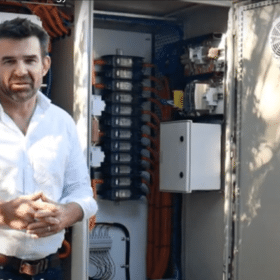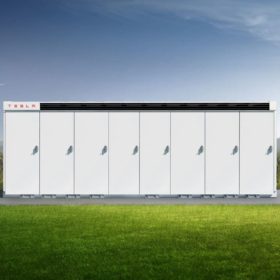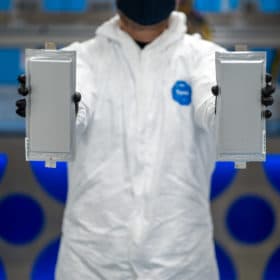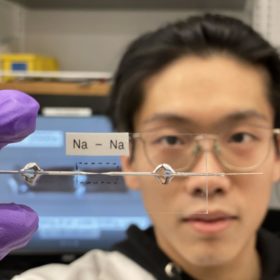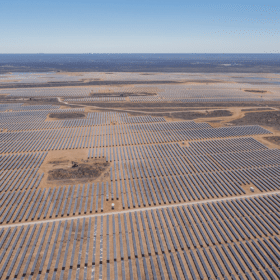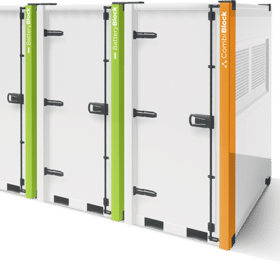Indian government approves scheme to support storage
India’s production-linked incentive scheme for battery storage is designed to facilitate the construction of 50 GWh of cumulative advanced chemistry cell (ACC) capacity and 5 GWh of “niche” ACC production facilities in India.
Redox launches high-voltage redox flow storage solution
Australia’s Redflow has unveiled its new Energy Pod Z module.
Tesla shifts battery chem for its Megapack energy storage system
The US electric car manufacturer is reportedly shifting to cobalt-free lithium iron phosphate (LFP) batteries for its utility-scale battery.
New electrolyte boosts lithium-air batteries
Scientists in the UK reported a breakthrough in lithium-oxygen batteries, achieved by experimenting with different electrolyte compositions. Working with ionic liquids, they were able to tweak the electrolyte recipe to minimize unwanted reactions during battery cycling, and greatly improve on both performance and stability.
Solid-state battery maker picks up $130 million investment
US based battery company Solid Power announced that it has received $130 million in new funding from investors including Ford and BMW. With this backing, the company plans to begin pilot scale production of solid-state lithium-ion batteries suitable for electric vehicles early next year.
Australia’s recycling opportunity emerges as batteries boom
Australia’s national science agency has identified a potential AUD 3.1 billion ($2.4 billion) industry, as the increasing penetration of renewable energy continues to drive growth in the battery energy storage sector.
A stable sodium battery, without the anode
Scientists in the U.S. demonstrated a sodium-ion battery with no anode, that retained 99.93% of its initial capacity per cycle. Their design was able to overcome many of the stability issues associated with using ‘pure’ alkali metals in batteries, thanks to carefully minimizing water content in the liquid electrolyte.
Big solar-plus-storage comes to Taiwan
Taiwanese module maker URE Corp is planning to link a 150 MW solar plant to a 15 MW/15 MWh storage facility.
Massive solar-plus-storage plant comes online in the United States
The 420 MW/40 MW storage-plus-storage facility was deployed by the Danish energy company Ørsted on a 3,600-acre site alongside existing oil and gas installations in Texas.
Leclanché unveils modular, plug-and-play solution for utility scale storage
The proposed solution is claimed to be able to mitigate potential fire risk, improve logistics and reduce costs. It consists of a series of interchangeable wide blocks that are said to be easily movable for simplified transportation.

